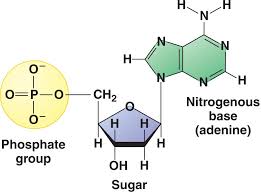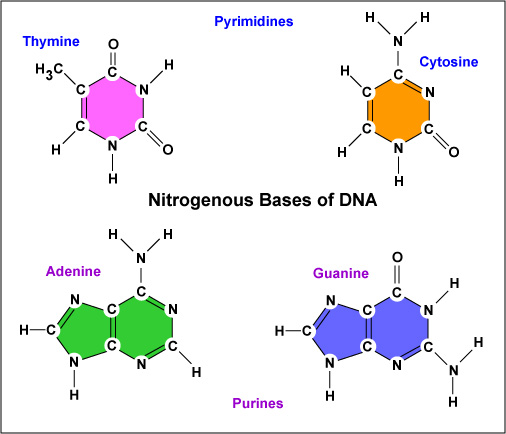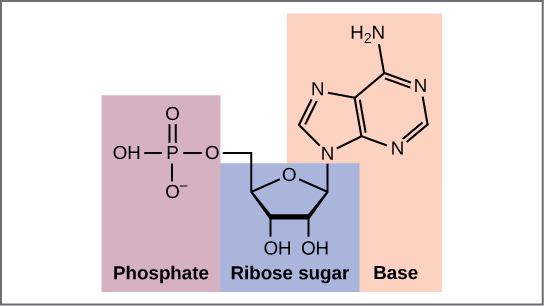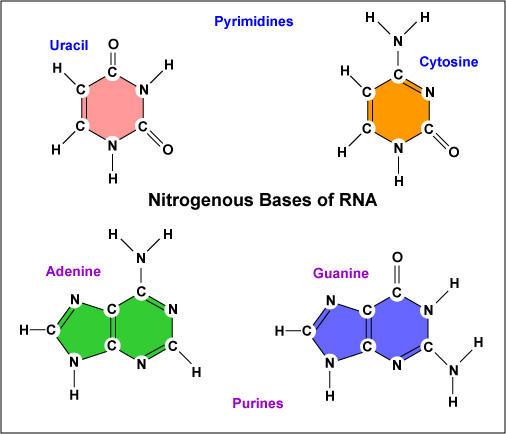How do DNA and RNA nucleotides differ?
1 Answer
Both deoxyribonucleic acid (DNA) and ribonucleic acid (RNA) are composed of nucleotides. A nucleotide is composed of three smaller molecules; a five-carbon suger, a phosphate group, and a nitrogenous base.
A DNA nucleotide contains the five-carbon sugar deoxyribose, a phosphate group, and one of four nitrogenous bases; adenine (A), guanine (G), cytosine (C), and thymine (T).
A RNA nuclotide contains the five-carbon sugar ribose, a phosphate group, and one of four nitrogenous bases; adenine (A), guanine (G), cytosine (C), and uracil (U). Uracil takes the place of thymine (T).
Both thymine and uracil pair with adenine.
So DNA and RNA nucleotides differ according to which five-carbon sugar is present, and whether the nitrogenous base thymine or uracil is present. DNA contains the sugar deoxyribose, while RNA contains the sugar ribose. DNA contains the nitrogenous base thymine, while RNA contains the nitrogenous base uracil.
The diagram below shows the structure of a DNA nucleotide. The sugar is deoxyribose, and adenine is one of four possible nitrogenous bases.

The diagram below shows the four different nitrogenous bases found in DNA.

The diagram below shows the basic structure of a RNA nucleotide.

The diagram below shows the four different nitrogenous bases found in RNA.


